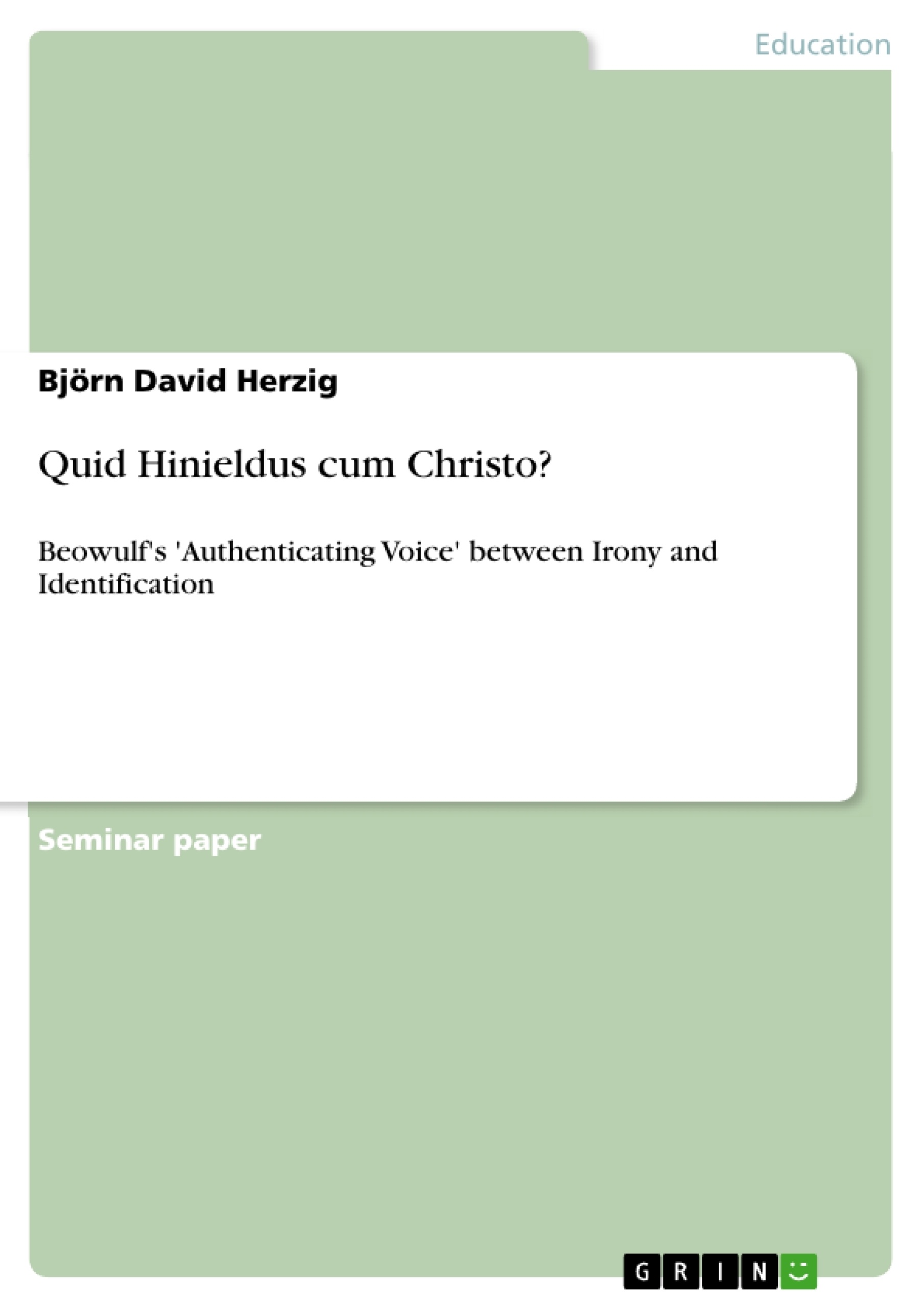Among the many features which shaped and defined the reception of Beowulf throughout the last 150 years, the poem's complex interplay of Germanic and Christian worldviews has certainly been one of the most controversial. In recent time, particular efforts have been made to account for the exact 'meaning' which the poem authenticates, i.e.: the point-of-view which Beowulf's Christian narrative voice exhibits towards the secular events depicted in the poem. In search for such an authorial stance, scholars have traditionally focused either on the Christian or the heroic dimension of the story: Whereas most 19th-century scholars (e.g. Ettmüller, Thorkelin, ten Brink), in the vein of a Romantic strive to unearth national origins, tended to emphasize its essentially pagan, mythical status and, consequently, downplayed the significance of any Christian interpolations, the 20th century (beginning with Klaeber) instead witnessed a radical shift towards a Christian, allegorical understanding of the poem. Although nowadays most critics opt for a more balanced viewpoint, the 'logical impossibility' of two coexisting cultural frameworks, into which Beowulf seems embedded, still remains and continues to generate much scholarly dispute. - In the course of this essay, I shall investigate the relation between heroic and Christian aspects in Beowulf and thus, try to account for the authorial meaning which the text itself is most likely to endorse.
Inhaltsverzeichnis (Table of Contents)
- Introduction
- Immanence vs. Transcendence: Scyld's Destiny
- Myths of Origin: Grendel and the Race of Cain
- Threshold to the ‘Otherworld': Grendel's Mere
- Recognizing Scriptural History? — Hrothgars's 'Sermon' and the Giant Sword Hilt
- Heroic Wyrd vs. Christian Salvation: Metaphysical and Eschatological Perspectives at Beowulf's Death
- Summary and Evaluation: From Irony to Identification
Zielsetzung und Themenschwerpunkte (Objectives and Key Themes)
This essay aims to investigate the relationship between heroic and Christian aspects in Beowulf and analyze the authorial "meaning" that the text itself is likely to endorse. It examines selected episodes from the poem's first half, focusing on the interweaving of scriptural history and Christian metaphysics with the narrative content.
- The interplay of Germanic and Christian worldviews in Beowulf
- The "authenticating voice" of the poem and its relationship to the events depicted
- The technique of "double-framing" and its impact on the interpretation of the poem
- The shift in the poem's focus from moralizing evaluation to an identification of heroic and authorial worldviews
- The significance of scriptural allusions and Christian metaphysics in shaping the poem's meaning
Zusammenfassung der Kapitel (Chapter Summaries)
- Introduction: This chapter introduces the complex interplay of Germanic and Christian worldviews in Beowulf and the challenge of determining the poem's "authenticating voice." It highlights the debate among scholars regarding the poem's meaning and the difficulty of reconciling its seemingly contradictory elements.
- Immanence vs. Transcendence: Scyld's Destiny: This chapter analyzes the opening episode of Beowulf, focusing on Scyld's ship-funeral. It explores the use of "double-framing" through the contrasting perspectives of the pagan tribesmen and the poem's "authenticating voice." The chapter argues that the poem presents a nuanced view of Scyld's destiny, with both immanent and transcendent aspects.
- Myths of Origin: Grendel and the Race of Cain: This chapter examines the introduction of Grendel as a prime example of "double-framing." It discusses the monster's motivation and the use of biblical allusions to connect Grendel to the lineage of Cain. The chapter suggests that the poem utilizes these allusions to introduce an additional layer of meaning to the story.
- Threshold to the ‘Otherworld': Grendel's Mere: This chapter explores the significance of Grendel's mere as a liminal space that signifies the boundary between the human world and the "otherworld." It analyzes the symbolic importance of the mere and its connection to themes of sin, death, and the supernatural.
- Recognizing Scriptural History? — Hrothgars's 'Sermon' and the Giant Sword Hilt: This chapter examines the episode of Hrothgar's sermon and the inscription on the giant sword hilt. It explores the ways in which these elements introduce scriptural history and Christian symbolism into the narrative. The chapter argues that these references contribute to the poem's complex moral and spiritual dimensions.
Schlüsselwörter (Keywords)
The key themes and concepts explored in this essay include the interplay of Germanic and Christian worldviews, the "authenticating voice" of Beowulf, the technique of "double-framing," scriptural allusions, Christian metaphysics, heroic wyrd, Christian salvation, immanence, transcendence, and the relationship between the literal and symbolic meanings of the text.
- Arbeit zitieren
- M.A. Björn David Herzig (Autor:in), 2004, Quid Hinieldus cum Christo?, München, GRIN Verlag, https://www.hausarbeiten.de/document/141820


